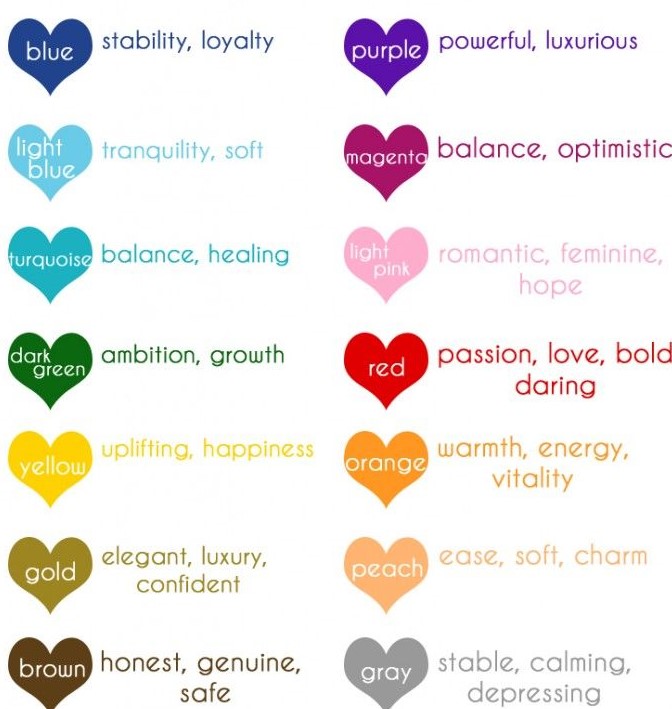Have you ever found yourself wondering about the colors of hearts used in texts, emojis, or even in art? Each color carries its own unique meaning and can convey a wide range of emotions and sentiments. The heart color means can vary from one culture to another, but they generally encapsulate feelings of love, friendship, and connection. In today’s digital age, where emotions are often expressed through symbols rather than words, understanding these colors can enhance our communication and emotional expressions.
From the classic red heart symbolizing passionate love to the calming blue heart that represents serenity and trust, the spectrum of heart colors serves as a visual language that transcends barriers. People frequently utilize these symbols in social media, text messages, and artwork, making it crucial to grasp their meanings. This article will delve into the various heart colors, their implications, and how they can be used effectively in our everyday interactions.
As we explore the heart color means, we will also touch upon the cultural background and psychological influences that shape these interpretations. Whether you are curious about which heart color to use in your next text to a friend or want to understand the deeper meanings of these symbols in different contexts, this comprehensive guide will provide you with valuable insights.
What Are the Common Heart Colors and Their Meanings?
Heart colors are not merely decorative; they serve as symbols rich with meaning. Here are some of the most common heart colors and what they signify:
- Red Heart: This is the most iconic heart color, representing love, passion, and romance.
- Pink Heart: Often associated with affection, kindness, and a gentle form of love.
- Blue Heart: Symbolizes trust, peace, and loyalty. It can also indicate sadness.
- Green Heart: Represents growth, harmony, and renewal; often linked to nature.
- Yellow Heart: A color of friendship, joy, and happiness.
- Purple Heart: Stands for compassion, empathy, and love that transcends boundaries.
- Black Heart: Often signifies sorrow, mourning, or a dark sense of humor.
- White Heart: Represents purity, innocence, and a clean slate.
How Do Cultural Differences Influence Heart Color Meanings?
The heart color means can vary significantly across different cultures and societies. For example, while a red heart may universally symbolize love in many Western cultures, in some Eastern cultures, red is associated with luck and prosperity. Understanding these cultural nuances is essential for effective communication.
What Does the Color Red Mean in Different Cultures?
In Western cultures, a red heart is predominantly linked to romantic love. However, in Chinese culture, red is a color of celebration, often used in weddings and festivals to symbolize good fortune. This duality illustrates the importance of context when interpreting heart colors.
How Can Heart Colors Enhance Communication?
Using heart colors in communication can add depth to your messages. Emojis and symbols can evoke emotions that words alone may fail to convey. Here’s how to effectively use heart colors:
- Choose the Right Color: Select a heart color that aligns with the emotion you wish to express.
- Consider the Context: Be mindful of the recipient's cultural background and personal preferences.
- Use a Combination: Mixing different heart colors can create a richer emotional tapestry.
What Psychological Effects Do Heart Colors Have?
Colors have a profound psychological impact on human emotions and behavior. Heart colors can evoke specific feelings and reactions:
- Red: Can increase energy levels and stimulate passion.
- Blue: Often induces calmness and tranquility.
- Green: Promotes feelings of balance and healing.
- Yellow: Invokes happiness and positivity.
Can Heart Colors Influence Relationships?
The heart color means can play a role in romantic and platonic relationships. Using the appropriate heart color can strengthen bonds and communicate affection more effectively. For example, sending a pink heart to a friend can convey warmth, while a red heart may indicate deeper romantic feelings.
What Are Some Popular Uses of Heart Colors in Modern Culture?
Heart colors are prevalent in various aspects of modern culture, including social media, marketing, and art. Here are some examples:
- Social Media: Platforms like Instagram and Twitter utilize heart emojis to express likes and appreciation.
- Marketing: Brands often use specific heart colors in their logos to evoke certain emotions.
- Art: Artists frequently incorporate heart colors in their work to convey feelings and social messages.
Conclusion: What Can We Take Away About Heart Color Means?
Understanding the heart color means can enhance our emotional expressions and improve our communication skills. By recognizing the significance of different heart colors, we can navigate our relationships with greater empathy and awareness. Whether in personal interactions or broader cultural contexts, these colorful symbols provide a unique lens through which we can explore our feelings and connections with others.
Discover The Best DIRECTV Channel Lineup Packages For Every Viewer
Unveiling The True Identity: Ed Sheeran's Real Name
Taylor Swift's Romantic Journey: A Comprehensive Boyfriends Timeline


